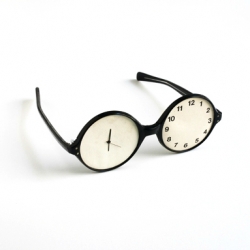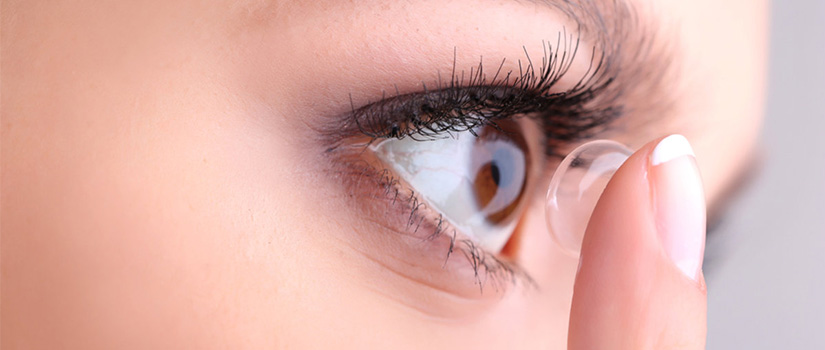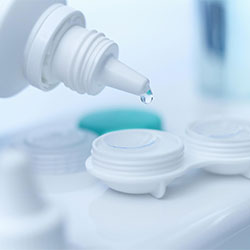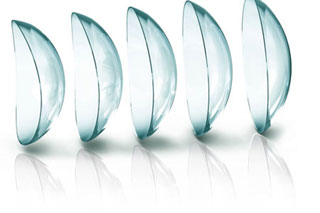A contact lens is a medical device and can be worn to correct vision, as well as for cosmetic or therapeutic reasons. In the United States, all contact lenses, even purely cosmetic ones, require a prescription. When cared for properly, contact lenses can provide healthy, comfortable and convenient vision correction.
The correct wearing schedule and hygiene guidelines are extremely important to ensure that the health of the eye is not compromised. Anyone can get an eye infection, but for contact lens wearers, infections are not just uncomfortable annoyances, untreated they can lead be irreversible vision loss.
Healthy Vision
Proper contact lens hygiene is extremely important to prevent infections so that you can continue to enjoy the benefits and convenience of healthy contact lens wear.
Here are a Nine Golden rules to promote healthy contact lens wear:
- Never expose your contact lenses or storage case to tap water
- Wash your hands with soap and water and dry them well before handling contact lenses.
- Avoid sleeping in your contact lenses, if not prescribed accordingly.
- Wear a pair of spectacles at times to give your eyes a break or when your eyes do not feel comfortable.
- Contact lens materials all differ and require a specific cleaning regime - Follow the guidelines given to you by your eyecare professional.
- Never store contact lenses in tap water.
- Rub and rinse the contact lens case with solution and dry the case upside down with caps off after each use.
- Don’t “top off” solution. It’s important to use only fresh contact lens disinfecting solution in the case.
- Visit your eye care professional at least once a year or immediately if you notice any eye problems.
Important:
If you experience irritation, worsening eye pain, light sensitivity, sudden blurry vision, or unusually watery eyes or discharge, remove your contact lenses immediately and contact your eye care professional.
Hygiene studies
Contact Lens Hygiene Is lacking and contact lens-related keratitis is on the rise, according to a recent CDC report.
In the United States approximately 41 million US individuals wear contact lenses and 98% of contact lens wearers surveyed reported at least one behavior that puts them at risk for an eye infection.
Keratitis is a common eye infection that can be caused by viruses, bacteria, fungi, or parasites that enter the eyes as a result of poor contact lens hygiene.
Contact lenses are classified as medical devices and regulated by the FDA. Between 2005 and 2015, there were a total of 1075 contact-lens related adverse events reported, of which:
- 213 (19.8%) discussed patients with corneal scars, decreased vision, and corneal transplant surgery.
- 270 (25.1%) discussed risk factors for corneal infections, including sleeping in contact lenses, extended wear, using expired lenses or products, storing lenses in tap water, or wearing lenses while swimming.
- More than 10% demonstrated that adverse events resulted in emergency department visits or immediate care.
Spectacle wear

Is it time to update your spectacle prescription?
Contact lenses have many advantages over spectacles. Contacts sit directly on your eye, so vision, particularly peripheral vision, is unobstructed. You can participate in sports and outdoor activities without fear of eyeglasses getting in the way, falling off or breaking.
Most contact lens wearers tend to agree that contact lens vision is superior to spectacle correction and often avoid or neglect spectacle lens wear. Virtually everyone who wears contact lenses is committing a string of cardinal sins which puts them at risk of blindness.
A survey by the Centers for Disease Control and Prevention of 1,000 adults found 99 per cent were breaking one of the golden rules for wearing contact lenses. The number of contact wearers has grown steadily over the last 20 years with 3.5 million people in the UK and 30 million in the U.S. alone choosing soft contact lenses to be worn daily instead of spectacles to correct their eyesight.
The report found a number of worrying - but extremely common practices - The most significant contributing factor to contact lens related problems is overwear. It is extremely important that contact lens wearer have an up to date prescription in their spectacles to ensure they can remove their contact lenses in order to maximise oxygen to the cornea.
“It is common to find that contact lens wearers tend to neglect updating their spectacle prescription, resulting in blurred or inappropriate vision with old specs, which leads to the avoidance of spectacle wear and contact lens overwear. At our practice contact lens wearers are educated on the health care benefits of wearing specs at home and giving the eye a break, which leads to healthier more comfortable contact lens vision” – says Russell Meyer-Wilson, optometrist and contact lens practitioner.
By simply following the guidelines of your eye healthcare provider or optometrist, the risk of contact lens related health problems are reduced significantly and contact lenses can be worn comfortable in the long-term.



